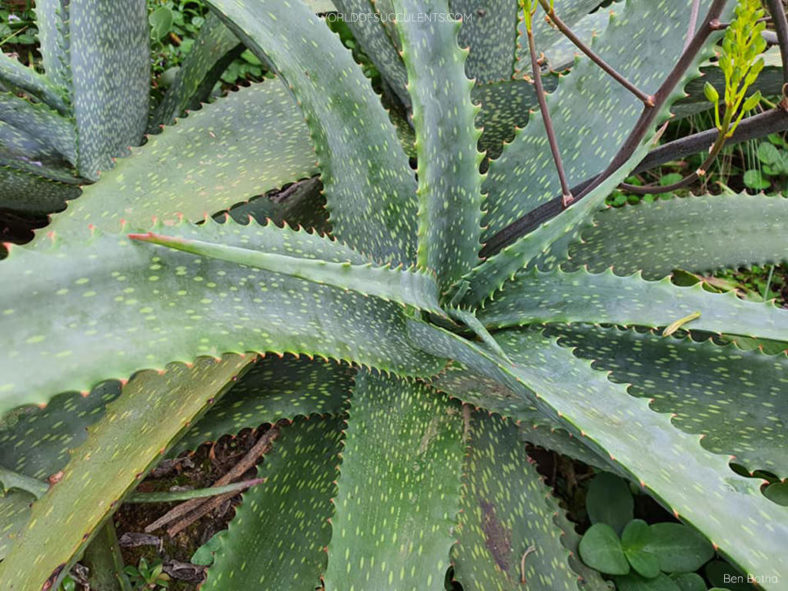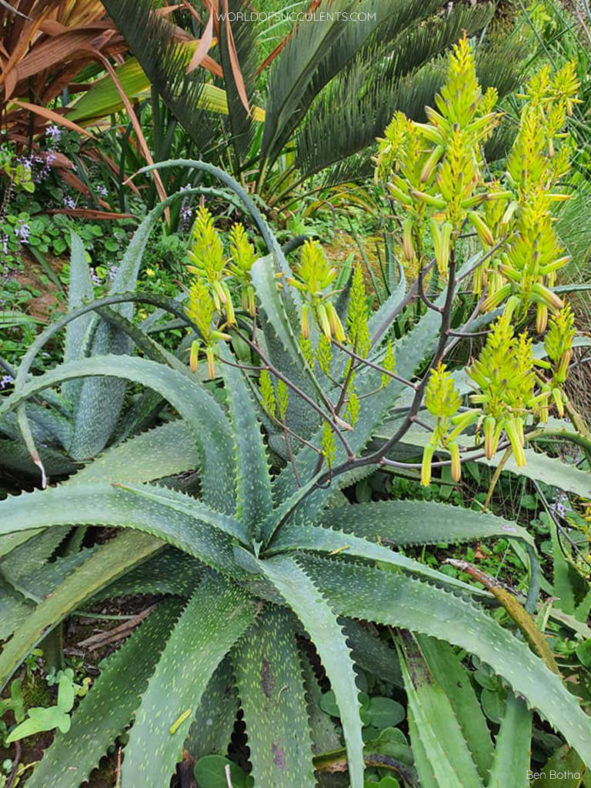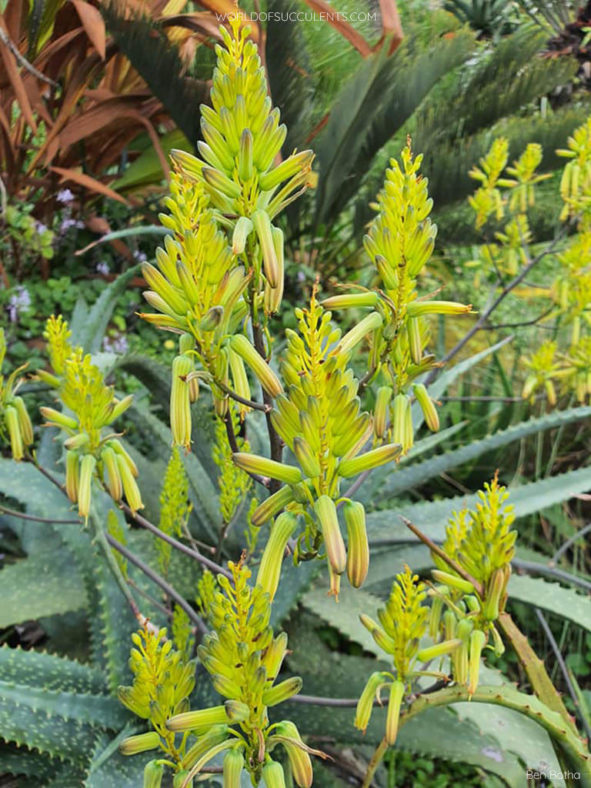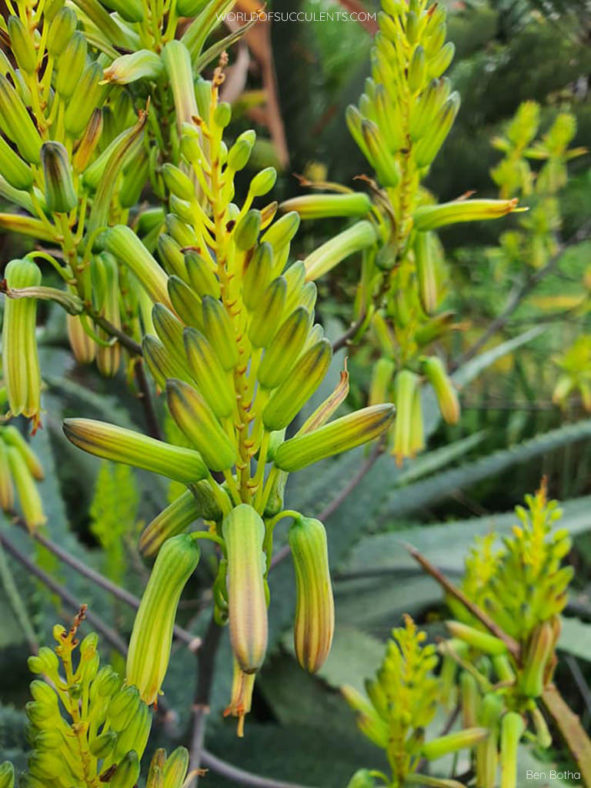Scientific Name
Aloe labworana (Reynolds) S.Carter
Common Name(s)
Labwor Hills Aloe
Synonym(s)
Aloe schweinfurthii var. labworana
Scientific Classification
Family: Asphodelaceae
Subfamily: Asphodeloideae
Genus: Aloe
Etymology
The specific epithet "labworana (pronounced lab-wor-AY-nuh)" means "of or pertaining to Labwor Hills" and refers to the type locality of the species in the Labwor Hills, a mountain in the Northern Region of Uganda.
Origin
The native range of Aloe labworana is from the mountains of Karamoja in northeast Uganda to the Imatong Mountains in South Sudan. It grows on rocky outcrops.
Description
Aloe labworana is an attractive succulent plant that forms stemless, sparsely offsetting rosettes of gray-green to blue-green leaves with (or sometimes without) white spots and tiny reddish-brown teeth along the margins. The rosettes can grow up to 1.2 feet (90 cm) tall and 4 feet (1.2 m) in diameter. The leaves are lance-shaped, erect at first, becoming spreading and recurved with age. They can measure up to 30 inches (75 cm) long and 4 inches (10 cm) wide.
The flowers are bright yellow, oriented upright, and appear in highly branched inflorescences in very open racemes in late fall and winter.

How to Grow and Care for Aloe labworana
Light: When growing A. labworana indoors, place your plant in a window with plenty of bright indirect sunlight. Rotate the pot once or twice a week so that all sides of the plant receive equal lighting. Outdoors provide light shade, especially during the hottest parts of the day.
Soil: Plant A. labworana in a well-drained soil mix formulated for succulents or make your own. Drainage is essential because too much moisture around roots can cause root rot.
Temperature: This succulent grows at its best at temperatures between 50 to 85 °F (10 to 30 °C). When temperatures shift below 50 °F (10 °C), it is time to bring your plant back inside. A. labworana can withstand temperatures as low as 25 °F (-3.9 °C). USDA Plant Hardiness Zones 9b to 11b, 25 to 50 °F (-3.9 to 10 °C).
Watering: This succulent does need regular watering but is very tolerant of drought conditions for short periods. Water deeply, but only when the soil is dry. Cut back on watering during the winter months. Do not let water stand in the rosettes.
Fertilizing: A. labworana generally does not require fertilizer but may benefit from the extra nutrients. Feed with a fertilizer for succulents in spring and summer only. Be sure to follow the label directions.
Repotting: This plant is not particularly fast-growing and will only rarely need repotting. Repot it in the spring in a container a few inches larger in diameter every few years to keep it from becoming rootbound.
Propagation: Propagating A. labworana can be done using seeds or offsets from a mature plant. Remove the offsets from late spring to early summer. For best results, sow seeds during the warm months.
Learn more at How to Grow and Care for Aloe.
Toxicity of Aloe labworana
A. labworana is not listed as toxic for people and pets.
Links
- Back to genus Aloe
- Succupedia: Browse succulents by Scientific Name, Common Name, Genus, Family, USDA Hardiness Zone, Origin, or cacti by Genus
Photo Gallery
Click on a photo to see a larger version.


